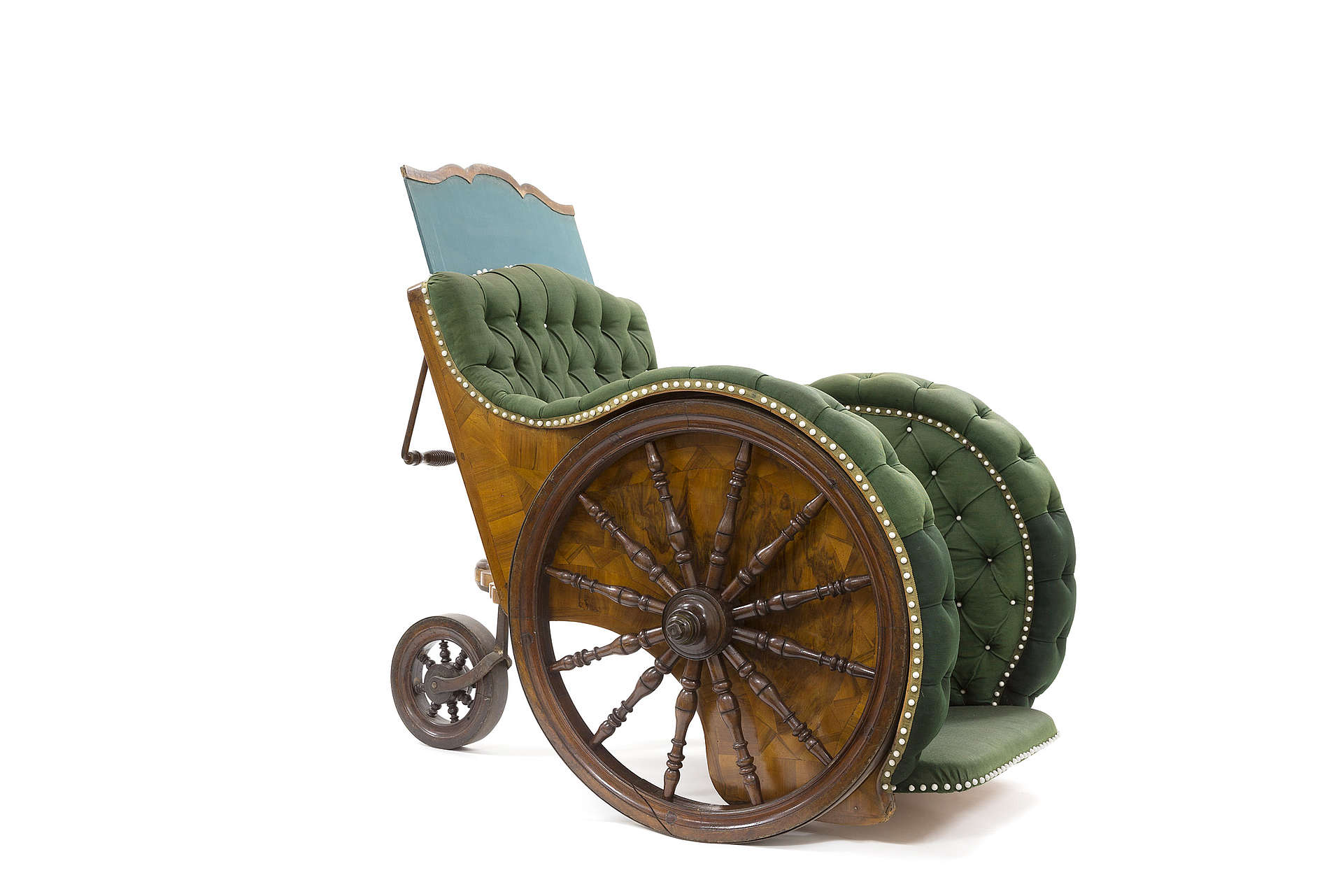In the annals of history, artifacts often serve as windows into the past, revealing the customs, technologies, and societal norms of their time. One such fascinating relic is the wheelchair crafted for Holy Roman Empress Elisabeth Christine of Brunswick-Wolfenbüttel in 1740. This article explores the historical context, design, and significance of this early mobility aid, providing insights into the life of the Empress and the evolution of wheelchairs.
Historical Context and Background
Elisabeth Christine of Brunswick-Wolfenbüttel (1691–1750) was a distinguished figure in European history. She married Charles VI, Holy Roman Emperor, and served as Empress consort from 1711 until Charles's death in 1740. During her life, she navigated the complex political landscape of the Holy Roman Empire, particularly as the mother of Maria Theresa, one of the most prominent female rulers of the time.
The 18th century was a period of significant political and cultural developments in Europe. The Enlightenment was in full swing, promoting ideas of reason, science, and human rights. However, healthcare and medical technology were still rudimentary by modern standards. In this era, mobility aids like wheelchairs were rare and often custom-made, reflecting both the status of the user and the limited medical understanding of disabilities and mobility issues.
Design and Features of the Wheelchair
The wheelchair created for Empress Elisabeth Christine in 1740 was a remarkable piece of craftsmanship, blending functionality with the aesthetic sensibilities of the time. Unlike modern wheelchairs, which prioritize lightweight materials and portability, this 18th-century wheelchair was likely constructed from wood and upholstered with rich fabrics, possibly velvet or brocade, adorned with elaborate carvings and possibly gilding.
The design likely included large wheels at the back and smaller ones at the front, similar to modern wheelchairs, allowing for smoother movement. However, given the period's technological limitations, the wheels would have been heavy and cumbersome, making the chair difficult to maneuver without assistance. The chair's seat and backrest would have been padded for comfort, an important consideration given the Empress's likely need for long periods of use.
Significance and Use
The creation of this wheelchair speaks to the specific needs of Empress Elisabeth Christine, who in her later years suffered from health issues, including limited mobility. The provision of such a device for the Empress reflects not only her status but also the compassion and care extended to her by her family and attendants.
In the broader context, this wheelchair represents an early example of the intersection between healthcare and technology. It illustrates the beginnings of a more compassionate approach to disability, where aids were designed to improve the quality of life for those with mobility impairments. This was a significant step forward in a time when disabilities were often stigmatized or poorly understood.
The Evolution of Mobility Aids
The wheelchair of Empress Elisabeth Christine is an important artifact in the history of mobility aids. Before the 18th century, devices to assist with mobility were largely crude and rare. However, by the 17th and 18th centuries, there was a growing awareness and demand for more sophisticated solutions.
The evolution of wheelchairs accelerated in the 19th and 20th centuries with advancements in materials and engineering, leading to the lightweight, maneuverable, and highly functional designs we see today. The shift towards more practical designs was driven by an increasing recognition of the rights and needs of people with disabilities, a concept that was nascent in Elisabeth Christine's time.
The wheelchair made for Holy Roman Empress Elisabeth Christine of Brunswick-Wolfenbüttel in 1740 is more than just a piece of furniture; it is a symbol of the changing attitudes towards disability and mobility in the 18th century. It highlights the intersection of technology, healthcare, and societal values, providing a fascinating glimpse into the life of an Empress and the early history of assistive devices.
Today, as we continue to innovate and improve the design of mobility aids, it is important to look back and appreciate the early efforts to support individuals with disabilities. The story of Elisabeth Christine's wheelchair reminds us of the progress we have made and the importance of continuing to advance inclusivity and accessibility in all aspects of life.








